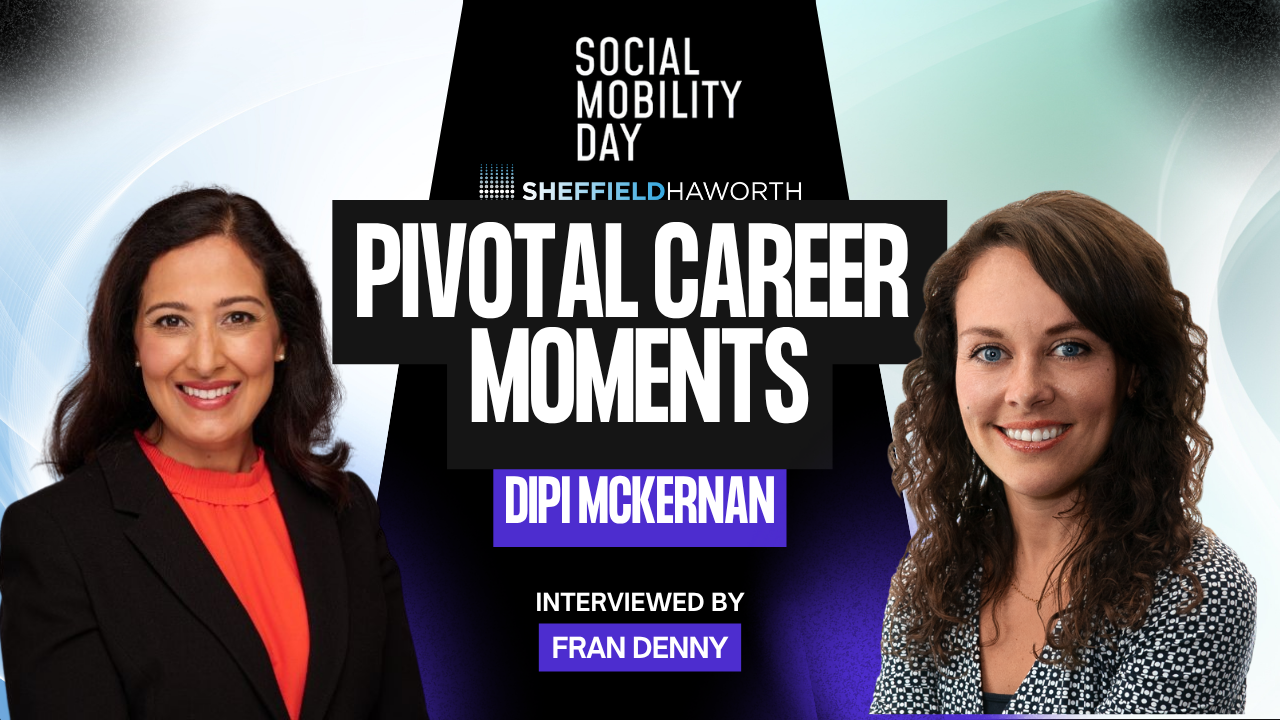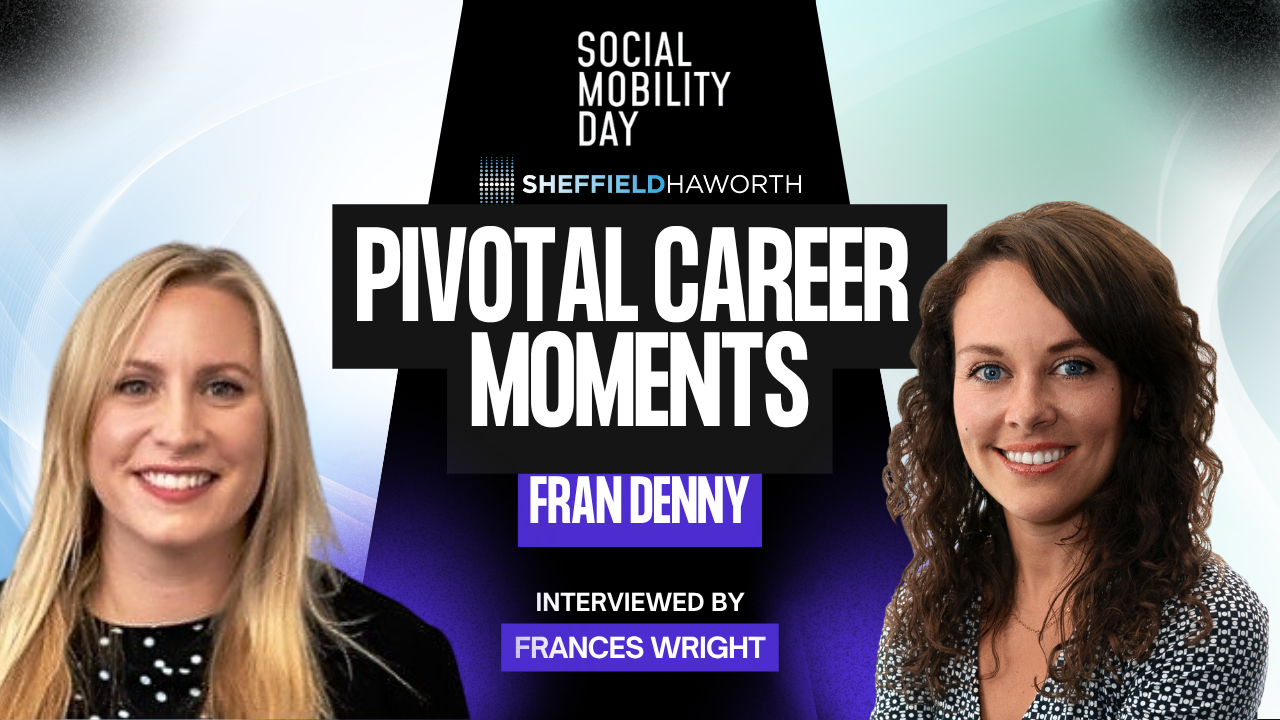By Victoria Torrillas, DEI Ethnicity Sub-Group Lead, Sheffield Haworth
Although we have experienced a wave of change when it comes to diversity and inclusion over the last five years, it is a fact that people of colour still face many barriers to entry when it comes to the workplace. This is partly why the theme of this year’s UK Black History Month is “Time for Change: Actions, not words”. However, beyond this shared understanding that things must change and the playing field must be levelled, there is little agreement on exactly what companies, business leaders, or colleagues should do to enact change.
As Sheffield Haworth’s DEI Ethnicity Sub-Group Lead, I wanted to share what we’ve been doing throughout the month to bring visibility to Black History Month.
Overcoming the elephant in the room
Let’s start with a quick discussion of the current elephant in the room when it comes to diversity and inclusion efforts. How can companies measure the success of their DEI hiring and development initiatives when they lack the data to do so?
Organisations across many industries often struggle to gather data on the ethnic makeup of their workforce. Here in the UK, they depend on their employees to self-report, which often leads to a low level of engagement and in turn of data points. So how can organisations measure and show progress when employees feel uncomfortable disclosing this information?
There is no easy answer, as ethnicity and identity are deeply personal. The hesitance to self-report can come from a place of fear, of not wanting to be othered, a place of disillusionment with the status quo, or even from a place of frustration given the way in which ethnicity is often listed in surveys.
Additionally, wide labels like BAME and White often do not paint the full picture of the populations they are conflating and can be reductive of individual lived experiences. An example that comes to mind is my own experience with these labels: I am white passing and often find myself having to tick the ‘White’ box in ethnicity questionnaires. However, what these surveys won’t tell you is that I am also a first-generation South American immigrant.
Moving beyond statistics
Because of that, it is imperative that those who care about DEI in the workplace continue to help their companies move beyond simply reporting diversity statistics and calling it a day. For companies to be truly inclusive, they need to look inwards and understand who their employees are beyond labels. They need to audit how their culture operates, understand the barriers to entry people may face when onboarding, and how they can remove those hurdles, as well as working out what support they can provide to their employees in the short and long term.
What are some of the best ways to do this?
The first thing that comes to mind is setting up an employee resource group. If you have one already, ensure that they have the funding and executive support to carry out initiatives to increase awareness within the business, and that they have the flexibility to meet regularly even if it’s for thirty minutes each month.
While an individual might not feel comfortable enough to speak openly to their managers or peers when they feel they are being discriminated against or when they face microaggressions in the workplace, they can often find comfort and support in a safe space like our employee group.
It is imperative though that employee groups not only provide spaces for education and for challenging the status quo, but also work to influence their ExCo to drive change internally and externally.
Being listened to helps people to feel empowered
Listening to members of your staff and taking their viewpoints and lived experiences into account when making workplace policies and decisions is crucial when it comes to inclusion. ERGs work so well because they give individuals that space and opportunity to talk about things in an open manner. Because of that, they can often be a space where they can come up with new and more inclusive policies and initiatives from the grassroots.
This year to mark Black History Month UK, a subset of the Ethnicity sub-group – including members of our US office and our superstar interns from the 10,000 Black Interns Programme – came together to deliver an internal activation event that was both educational and engaging. As part of that, we invited members of our London office to come in for some snacks and drinks, and we papered all our common areas (yes, toilets included) with posters about the mission of BHM, Black History vignettes (the trans-Atlantic slave trade, the role of Black Britons in the British Armed Forces and the NHS, amongst others) and key Black influential Britons in business, sport, arts, politics, and activism.
Alongside that, we purchased copies of the Black History Month magazine and of five books (a mix of fiction, historical non-fiction and self-improvement books) to start building a DEI library. These books represented a variety of points of view, and were designed in some cases to challenge colleagues’ worldviews, as well as help support productive conversations with regards to race and ethnicity:
- Black and British by David Olusoga
- How to Have Difficult Conversations About Race by Kwame Christian
- Imperial Intimacies: A Tale of Two Islands by Hazel Carby
- Why I’m No Longer Talking to White People About Race by Reni Eddo-Lodge
- The Windrush Betrayal: Exposing the Hostile Environment by Amelia Gentleman
Beyond employee resource groups: what else you can do to promote inclusion
So, in short, if you’ve got this far and are wondering where to start to effect change in your organisation, I hope that our employee resource group inspires you to take action, big or small. Here are some more ideas of how you can help promote inclusion in your organisation throughout the year:
- As with UK Black History Month, mark any significant cultural and religious days or events on your calendar and do something appropriate to celebrate them.
- If you are ever unsure on how to pronounce someone’s name – just ask!
- Sign and enact a pledge within your organisation that supports your employees, like the Halo Code or #mynameis.
- Consider providing unconscious bias training for employees at all levels in your organisation. Find a credible provider and ensure that they spend some time understanding who you are as an organisation and your potential blind spots so that they can best support you. We all have unconscious biases, and if we are able to uncover and understand them in a nuanced and unjudgmental way, that is hugely beneficial on an individual and organisational level.
- Listen and take action. We’ve already talked about how useful ERGs can be to help individuals feel listened to, but it’s important for everyone in your organisation to not just be an active listener but also an active bystander for their colleagues and their needs. This is not just beneficial for relations between colleagues from different backgrounds, it benefits all of us equally.
If we genuinely care about diversity and inclusion, it’s important to acknowledge people on a cultural and an individual level, to create tailored solutions and strategies to support individuals regardless of culture or background, and to help bring the best out of them as they come into your organisation. When all is said and done, inclusion starts with taking it seriously, challenging our biases and recognising that it is not a once and done tick box exercise.
Don’t use lack of data as an excuse to do nothing. Use it as an opportunity to listen to your employees, create a positive and inclusive culture, and your DEI efforts will be much more successful over time.

















